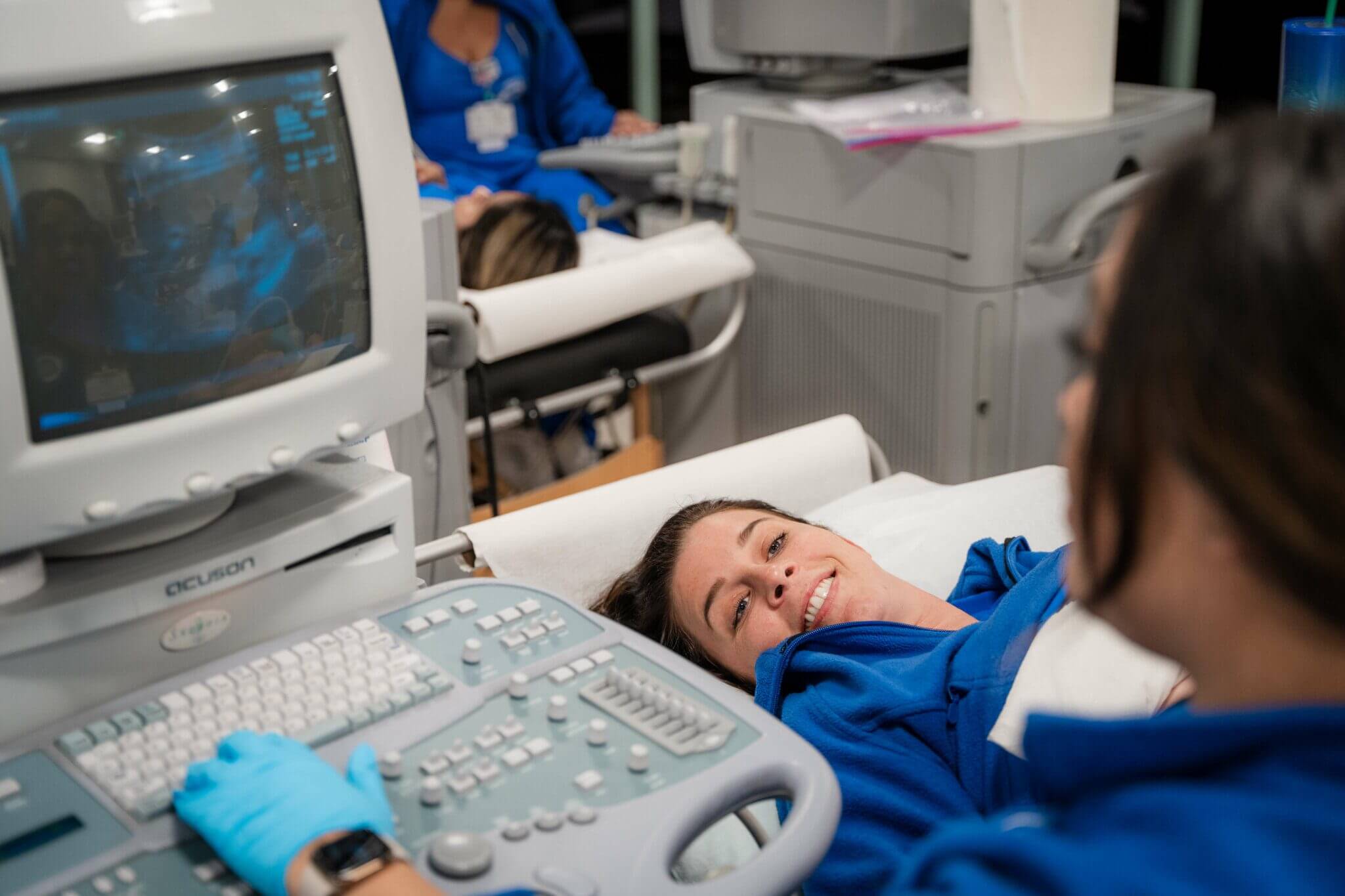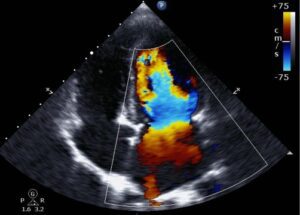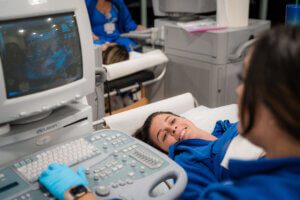What Does a Cardiovascular Sonographer Do?
Date: May 17, 2023
Cardiovascular sonography, a.k.a. echocardiography, is a specialized area using ultrasound technology for cardiac purposes. Simply put, an echocardiogram is an ultrasound of the heart. Like traditional ultrasounds, an echocardiogram uses sound waves rather than radiation to produce images.
What Are Echocardiograms?
Echocardiograms enable physicians to examine valves, determine heart size, and assess how well these function. Used routinely in the early detection of complications, diseases, and cardiac abnormalities, such ultrasounds allow for more accurate diagnoses of the heart. Further, an echocardiogram can help determine how forcefully one’s heart is pumping and detect areas of the heart wall that a heart attack, disease, or other causes have injured.1 Additionally, the procedure may be used to identify congenital anomalies in utero.
“One may have one of several echocardiograms, depending on what information a doctor requests. Each type of echocardiogram involves little, if any, risk.”1
Why Are Cardiac Ultrasounds Done?
Some reasons why an echocardiogram might be ordered include the following:
- To check for problems with the valves or chambers of one’s heart;
- To ascertain if heart problems are responsible for symptoms such as shortness of breath or chest pain.
- In utero, to detect congenital heart defects before birth.1
Who is a Cardiovascular Sonographer?
A cardiovascular sonographer conducts tests on patients’ pulmonary and cardiovascular systems for diagnostic, therapeutic, or research purposes.2 They may perform or assist in electrocardiograms, cardiac catheterizations, pulmonary functions, lung capacity, or similar tests.2 As they perform such procedures, sonographers record patients’ cardiac activity using specialized electronic test equipment, recording devices, or laboratory instruments.2 Often, they explain testing procedures while obtaining and recording patient identification, medical histories, and test results. All the while, sonographers monitor patient comfort and safety during tests, alerting physicians to abnormalities or changes in responses.2
How Does One Become a Cardiovascular Sonographer?
Generally, the path into the cardiovascular sonography profession begins by obtaining an associate degree. While an associate degree is helpful, it’s not a requirement. Unlike traditional four-year college paths, completing a cardiac sonographer route takes less than two (2) years. Gurnick Academy’s 18-month,* in-depth program, with six months of clinical rotations in echocardiography, prepares future cardiac sonographers to secure their American Registry of Diagnostic Medical Sonography (ARDMS) credential. Ultimately, said credentials provide for entry-level work within adult echo specialty areas.
An Associate May Be Advantageous
Graduating from a program that provides an Associate Degree may be advantageous as it may create an advantage when seeking employment over those who do not have a degree. (However, remember results may vary on an individual basis.) An associate degree also prepares the graduate for continuing their education in a Baccalaureat program such as the BSDMI.
Moreover, in an Associate Degree program such as ours, course emphasis is placed on appropriate ergonomic scanning applications for the cardiac sonographer’s well-being. Meanwhile, students learn how to produce quality diagnostic images of the heart to contribute to the diagnostic process. Students also receive the necessary instruction for proper patient care while utilizing ethical, professional, and HIPAA guidelines. All the while, students are prepared to pass the ARDMS certification exam.
Additional Studies or Certification
Understanding ultrasound, physical principles, and the knowledge of pertinent equipment is a prerequisite to obtaining good data.3 The cardiac sonographer must also learn the anatomy, physiology, hemodynamics, and pathophysiology of cardiac and thoracic surgery.3 These essential skills are an indispensable prerequisite for interpreting the obtained data and the echocardiographic and Doppler parameters.3
“Soft skills such as communicating and interacting with patients of all generations, cultures, and medical conditions are of value to this profession.”
Beyond this, would-be sonographers learn various skills to equip and prepare them for their future careers. Notwithstanding, soft skills such as communicating and interacting with patients of all generations, cultures, and medical conditions are of value to this profession. Sonographers should also learn how to be effective team players. Moreover, valuable traits include interpersonal skills and interacting with medical and administrative personnel within medical imaging settings.
Benefits of Becoming a Cardiovascular Sonographer
According to the Bureau of Labor and Statistics (BLS), cardiovascular sonographers have a significantly greater ROI than other similarly situated program professionals. The national median annual wage for cardiovascular sonographers is around $75,380 annually.4✣
Employment Settings
Generally, hospitals are the primary employer of cardiac sonographers. However, additional opportunities exist in doctors’ offices, medical clinics, and diagnostic imaging centers. Work hours may include weekends, evenings, holidays, and on-call coverage in these settings.5
Within hospital settings, cardiac sonographers work in fast-paced environments. Whereas daily tasks may be flexible as patient loads fluctuate. Within clinical settings, work schedules tend to be more regular.5 All in all, a vocation in cardiac sonography may be ideal for those preferring to stay active, work directly with patients, and serve with teams.5
“Diagnostic Medical Sonographers rate #6 in Best Health Care Support Roles”
Job Satisfaction
National job outlooks for the field are only expected to grow. According to the BLS, forecasts in this profession are projected to grow ten (10) percent from 2021–2031. This is faster than the average for all occupations.4
Further, the vocation receives high rankings within multiple core employment areas. U.S. News ranked Diagnostic Medical Sonographers rate #6 in Best Health Care Support Jobs and #64 in 100 Best Jobs overall. Jobs are rated according to their ability to offer an elusive mix of factors, including work-life balance, stress, upward mobility, and future growth.6
Are You Interested in This Field?
Do you think a career in cardiovascular sonography may be for you or someone you know? Find out more on the program page. Consider taking the career training readiness quiz here, or contact a knowledgeable admission advisor today.~
*72 Approved Instructional Weeks
✣ This may or may not be your experience. Wages can vary depending on many factors, including geographic location, years of experience, company culture, seniority, etc.
By Cindy R. Chamberlin.
Citations:
1^a, b, c Weiss, Josh. “Important Facts about Echocardiograms.” Hollywood Diagnostics, Dec. 16, 2019. (Accessed May 1, 2023.)
2^a, b, c, d “29-2031.00–Cardiovascular Technologists and Technicians.” O*NET OnLine, National Center for O*NET Development. (Accessed May 11, 2023.)
3^a, b, c Nicastro, Irene, et al. “Professional Education, Training and Role of the Cardiac Sonographer in Different Countries.” Journal of Cardiovascular Echography, Vol. 23,1 (2013): 18-23. (Accessed May 11, 2023.)
4^a, b Bureau of Labor Statistics, U.S. Department of Labor, Occupational Outlook Handbook, Diagnostic Medical Sonographers and Cardiovascular Technologists and Technicians. (Accessed May 10, 2023.)
5^a, b, c Mayo Clinic College of Medicine and Science. “Cardiac Sonographer.” Mayo.edu, 2016. (Accessed May 11, 2023.)
6 “Diagnostic Medical Sonographer Ranks among Best Jobs of 2020.” U.S. News in World Report. (Accessed May 10, 2023.)






